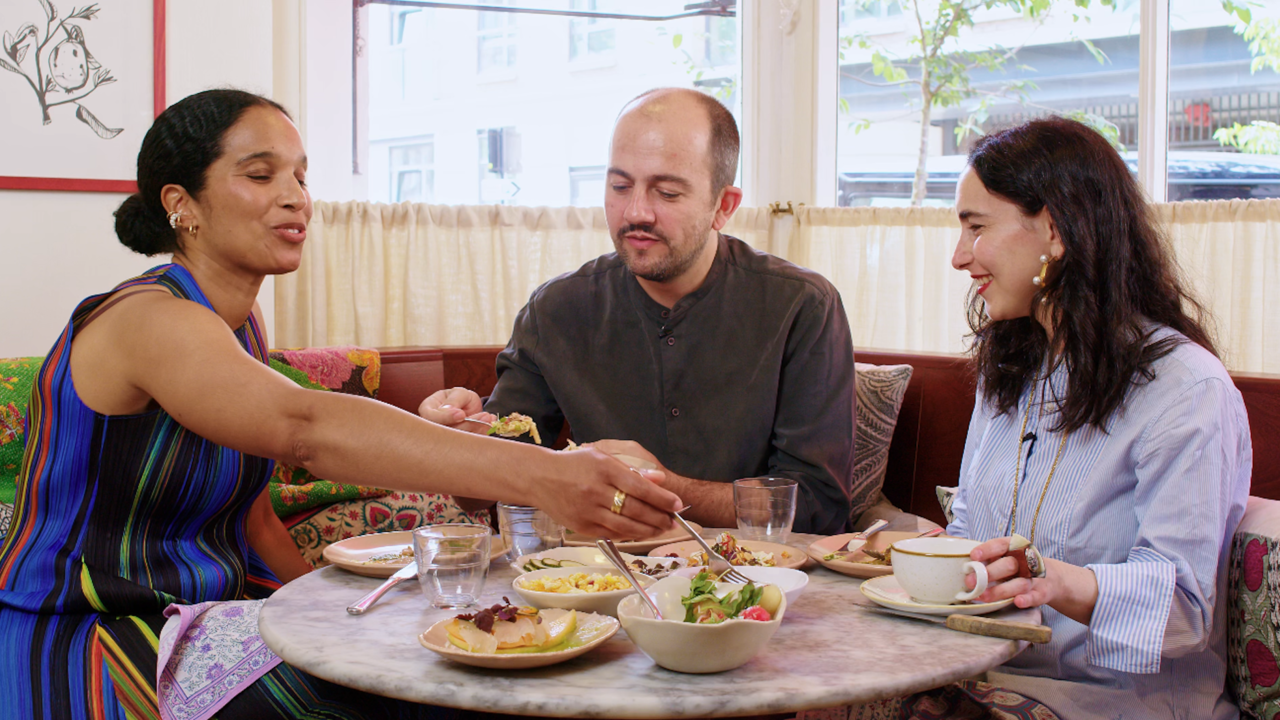Queer
An interview with Simon Watney
An interview with Simon Watney
Simon, amongst other things you have taught photographic theory, you have written books on British art history and articles on health issues and have just designed the frankest safe sex campaign in Europe. Nowadays you divide your time between New York and London, writing about AIDS issues and, inevitably, looking at the influence of the epidemic on the visual arts. Do you find a difference between the attitude of the British and American art world to what's happening?
At the Whitney Biennial this year Group Material made an installation in the form of a chronology of ten years of epidemic, at different levels of representation, from American TV to the press to the emergence of activist organisations and their graphics. It is unthinkable that an institution in this country might invite a group to make an installation like that. Last year London could have taken a show by Gran Fury, with the Venice Biennale piece which was originally censored by the Italian government. I find that very sad. This is a measure of the poverty of imagination in the institutions of the London art world. On the other hand it is possible for Simon Herbert to organise a vast installation by Karen Finley at the top of a huge warehouse in Newcastle, as he did this year.
You were a founder member of Outrage!, a lesbian and gay activist organisation. Could you outline the current state of the debate about activism in Britain?
I think the debate about activism is twofold. One is about community responses in the epidemic. After a decade of systematic neglect of health education, both in American and Britain, 1% of the British Government's health education budget has gone to gay men who still make up 80% of people with AIDS. One of the most recent figures I've had was that out of 250 health districts in the UK, 60 have health education of one kind or another for women; 40 for people of colour, 40 for people in prison; but only 16 for gay men. So there's a gigantic disparity here. Many people think gay men have been deluged with heath education and knee deep in condoms for years. In fact almost nothing has been done for those whose need is greatest, especially teenagers. Most Europeans don't have this proximity to the epidemic. Perhaps in Paris, perhaps in Berlin, but not in Lyon, and certainly not in London. In terms of statistics alone, we have 60 million people and less than 5,000 cumulative cases. Most gay men have never even met anybody with AIDS. So the first part of the activism is to make people at risk aware of the issues, to give them confidence in dealing with their sexual needs. The second is the larger issue about sexuality and the management of politics. In Britain, as both parties move towards the centre, Ian McKellen has had breakfast with John Major - a major symbolic event, unthinkable under Thatcher, but actually unthinkable under any previous Labour Prime Minister as well. There's going to be an enormous pressure towards a normalizing discourse.
I don't like the word 'normalizing'.
Nor I, but it has real advantages. We'll probably see the age of consent brought into line with European Law; we'll probably see more fierce constellation around abortion, but in the end, the defense of abortion rights and choice in this country, I suspect. What I see here is this kind of grey governmentality, in which lesbians and gay men can marry, in which we can do all sorts of things within a conventional biopolitical model of serial monogamy, but ringed around by a whole series of new bogeypeople. 'Homosexual desire' will be just one place on a map of the perverse which offers all sorts of interesting alignments. It's the perverse which interested me in the origins of gay liberation - a politics which is not, in the end, just about homosexual desire and identities, but about sexuality across the board. And that's what I see in the new queer politics, and the new queer activism. Whether it's queer nationalism in America or Outrage! here, it's something which is posed radically against the whole power system, and the identities of sexuality.
Why do you use the word 'queer'?
Because it offers some neutrality across gender and across race. Kids in America feel they have much more in common with each other as women and men as queers, than with an older generation of lesbians and gay men, whom they see as complacent, materialistic, apolitical... Any number of different reasons. Gay male culture has been a disaster. For 20 years it has been obsessed with positive images: it's a very conservative culture.
How does lesbianism fit into all of this?
Lesbianism has always been a categorical anomaly. Gay men and lesbians haven't worked together for the simple fact that lesbians have always been tied by gender to the women's movement and to feminism, and gay men to the assumption that gay means white men. 'Gay' started in the 70s as a term for women and men, but never really achieved that goal. I think 'queer' is important for young women who are sexually attracted primarily to other women. So they don't have to be lesbians or go through that entire set of cultural issues that the older generation is tied to. They can just be queer. It's amazing meeting 22-year-old queers in LA or New York now who say 'I hate lesbians and gay men. I'm queer.' As a man of my age, I still identify strategically in lots of ways as gay, but feel happier with that queer position than with much gay and lesbian politics, which is minoritist, is about gaining rights, discreet rights, rights to equality, whatever. This is important, but the goal seems to be complete acquiescence to a set of identities, a power system in our society which I and a lot of other people don't want to live with.
'Queer', on the other hand, lies...
Somewhere between SM dykes and black drag queens and women fist-fucking gay boys, last year's lesbians now calling themselves boy pussies at Kinky Gerlinky. I find all that stuff intriguing, and not just in a whimsical or voyeuristic way.
Doesn't this exclude older people?
I know what you mean. Queer has a real down side. It has a kind of romantic separatism, a fin de millennium otherness which can be tiresome... But who am I to say that? I'm not 78, having grown up under Thatcher or under George Bush and Reagan. I don't live in a culture like San Francisco, where 49% of black gay kids under 25 are HIV positive.
Looking back on homosexual politics, what do we see?
This is where I see the need to distinguish the homosexual politics and homosexual culture of the early 20th Century, from a gay politics and a gay culture, and a new queer culture. I wrote a catalogue for Simon Watson earlier this year called Wet Holes in which I tried to map three sets of strategies: homosexual cultural strategies, gay cultural strategies and queer ones.
Homosexual politics was about seeking tolerance, and it called on a notion of sensibility and a long lineage of homosexuals in history who would justify this tolerance. The idea was that somehow we are redeemed by our good taste. This does give us some minimal value, I suppose. We're not actually seen as piles of shit. We're tasteful. That's what homosexual culture amounts to: a kind of special pleading, weighted to the aesthetic, and an essentialist reading of sexual identity in the visual arts.
Gay culture dumps a lot of that, but its culture is still curtailed by this rhetoric of positive images, its notion that culture is supposed to present the 'truth' of lesbians and the 'truth' of gay men, which tends always to marginalise the perverse. This cleans up the act too much. It means one's always thinking that any representation of a gay man is somehow representative. And I think that's absurd. As a way of thinking it's minoritist, and embraces the notion of homosexual and heterosexual, with a crisis point, the bisexual, in the middle. In the last 20 years, we've seen the meaning of 'bisexual' shift totally. The bisexual was always taken to be ideologically the heterosexual who occasionally did it with the same sex. Now it means the reverse. It means the man who has sex with men who is too ashamed or afraid to take up a real gay identity, and also does it with women. I think both of these definitions are naive because they don't appreciate that the question of sexuality as it applies to all men and all women is about choice and mobility: stability within one position or fluidity across a lifetime.
Queer copes with a whole set of issues about representation and object choice. If we take the most important message of feminism, which is that all forms of signification are gendered, and importantly, that this is the case where it is least obvious, we can also say that all systems of representation also involve identifications, projections which are about object choice. In fact, our every glance is informed by object choice. Queer culture raises questions about projections rooted on object choice, fantasies on object choice, organizing principles around object choice. That's what I'm interested in. A lot of young artists in New York are involved in that kind of investigation.
I know you're keen on the work of Adam Rolston.
I am. Adam Rolston makes installations. One had two little glass boxes, like a scientific experiment. In one was a large pink dildo labelled HOMOSEXUAL. In the second is a wedding cake with little figures labelled HETEROSEXUAL. Another had a Cuisinart labelled HETEROSEXUAL, and a pair of paint-stained DMs, labelled HOMOSEXUAL. Admittedly, this is literal, but it draws attention to the categories that define people's lives and by extension the choices they feel able to make, the power they feel able to exercise in their lives, the pleasure they can experience, in other words, to go to the heart of what I see a queer culture being about.
The issue of pleasure also crops up in the work of Steven Evans. He has white silk dresses made up from a Little Lord Fauntleroy print and he makes black on black slides of them, in which you see yourself reflected. But that process of identification, of boys who are terribly pretty, runs through a whole set of questions about what we are looking at, and where our sexuality is when we find this attractive.
Other artists stress the historical dimension of the AIDS crisis. Donald Moffett is a member of Gran Fury and his work comes directly out of that dialogue between people like Barbara Kruger and Craig Owens in the late 70s and early 80s in New York, about Donald realigns people in relation to the epidemic, with slogans like CALL THE WHITE HOUSE. TELL THEM WE'RE NOT ALL DEAD YET. Or CALL JESSE HELMS, and then you get the number projected on the colour screen of a television, which is where information comes from at this time. There are reproductions of Civil War heroes ( The metaphor of a Civil War is one Gran Fury have mobilized: of a government turning its back on its people in a time of emergency.) Then there are more formal works: a series of billiard balls with holes, for example, emphasizing the point that the anus is not gendered.
Love Movement is two men who live and work together. The project I saw at their studio had to do with the assassination of Harvey Milk and a chronology of the riots in San Francisco which resulted from the acquittal of his murderer Dan White. There has just been another set of riots in San Francisco because the Governor has just thrown out an equal rights amendment proposed by the local government. Love Movement produce huge paintings of crowds, cars, night scenes and riots generated from photographic images. The issue is monumentality. There's an obvious parallel to Gerhard Richter's Baader-Meinhof work. I don't want to make enormous claims for this, but no-one else is making work on such a vast scale. It's about local history, national history and queer history being part of that. And about double standards of justice. Dan White got only three years because he claimed his judgement had been impaired by eating Twinkles.
What do all these artists have in common?
I think what they have in common is this refusal of that whole category system of sexuality. At the same time they are working with desire. All the debates that took place around the 'Difference' show, debates that never took place here, were timely and important, but they happened in a very narrow, rarified corridor between the university and the museum. They were not debates about street life, whereas the queer stuff does seem to be. It is inevitably about the epidemic. And is about censorship, and is about sex education, and is about the most fundamental issues. That's why I think 'queer' is such an important word to be mobilizing around culturally at the moment. And why it's drawn me out curatorially, and as a writer as well, and why I've been writing a lot about it for the last couple of years. I want to do this group show here, if I can, just called Queer, and to look at exactly these genealogical issues as well as theoretical issues, and to do something better than the Difference show, across Performance, photography, painting and so forth. When Craig Owens died, and the exoticism project he was engaged on died with him - that was the last time there seemed to be a coherent exhibition project for this city, planned around representational strategies, dealt with in a really innovative and interesting way. I'd like to try and continue some of that project through from earlier in the 80s, the project which got hijacked by Thatcherism and by the cowardice of the gallery system in the face of Thatcherism, and curators and critics too. We see theatre decimated too, with a few exceptions. I'd like to think that around the word 'queer' we might really be able to assert a series of issues about representation, culture, the future, identity and pleasure in a pleasantly anarchic way.
From what you have said, could you extrapolate a definition of queer?
Yes. Somebody who is able to speak something about male affection outside and in the face of homo/hetero distinctions.
Presumably this began before the 1990s.
There's a continuum that's pre-gay. You might want to suggest a line from Oscar Wilde through Ronald Firbank to Divine and people like Morrissey or Madonna or Neil Bartlett today: people whose work, both in their lives and in their cultural practice, contests sexuality and its categories.
In British culture the line you describe is confused and enriched by issues of class.
True. You can scour Richard Ellman's biography of Wilde in vain for mentions of the street-boys he picked up.
And presumably this attitude is a hangover from the reactions of his contemporaries. Frank Harris reports seeing Wilde at the Cafe Royal with male prostitutes, but Harris was not angry at their being with him or that he spent money entertaining them. He is shocked that Wilde not only bothered with them as people but, he says, 'wasted' his best epigrams on them! I'm sure Wilde saved his bon mots specially for those boys.
What, I wonder, was their response to him?
It's hard to say. To come up to date, in the video of Morrissey's comeback concert in Wolverhampton, you have the spectacle of boys getting onto the stage, just falling at his feet and not knowing what to do. This is where it is queer to me. The boys are 'straight' and they're at the foot of the only man they give permission to sing about their vulnerability, to speak their needs, which include the love of other men. Some of them hug his knees, some of them touch him, some just stand in tears, because they can't touch him for fear of being seen as queer.
Is Annie Sprinkle queer?
As queer as a coot. Annie Sprinkle stands onstage in her bra and pants and talks you through her narrative of fifteen lovers, five of whom have died of AIDS, several of whom are women, one of whom is a lesbian-to-male transsexual. All of these are people she's loved and who have loved her. So this is about sex irrespective of the object. There is an idea of an aristocracy of sex around 'queer' which is a very ambivalent aspect of the term. By the time she invites the audience to come forward and look at her cervix, the question of sexuality and even gender is irrelevant. This is health education as well as art. I have never seen anything like it. There is something obsessive here, something very painful to watch. I don't need to agree with people. If she thinks she's Anya, asserting her mystical oneness with the whores of the ages, it's not my business to say it's New Age nonsense. She probably thinks my readings of Foucault are equally mad. Most people who have been through prostitution or the porn industry are given public space only if they speak as victims and condemn exploitation and pleasure and diversity. Annie Sprinkle doesn't. There's no doubt that she has been exploited. But anyone who gives us a twelve-step programme to a one-hour orgasm has something going for her. She wants everyone to be happy.






















